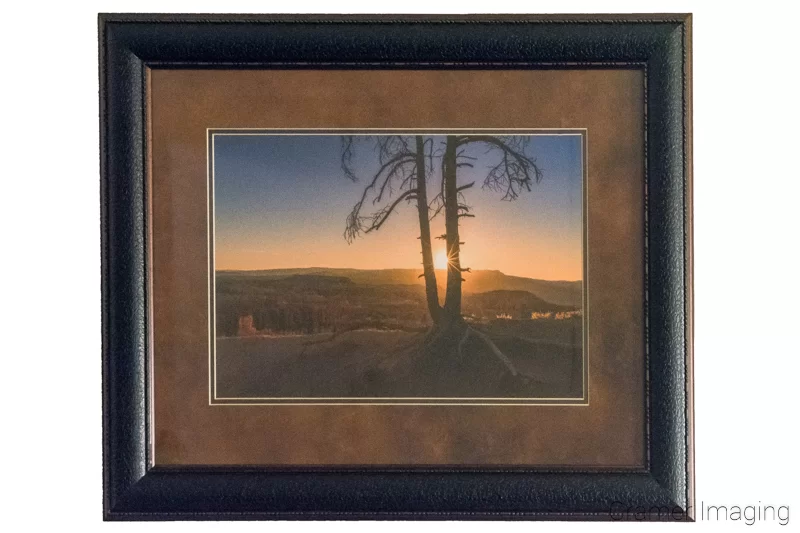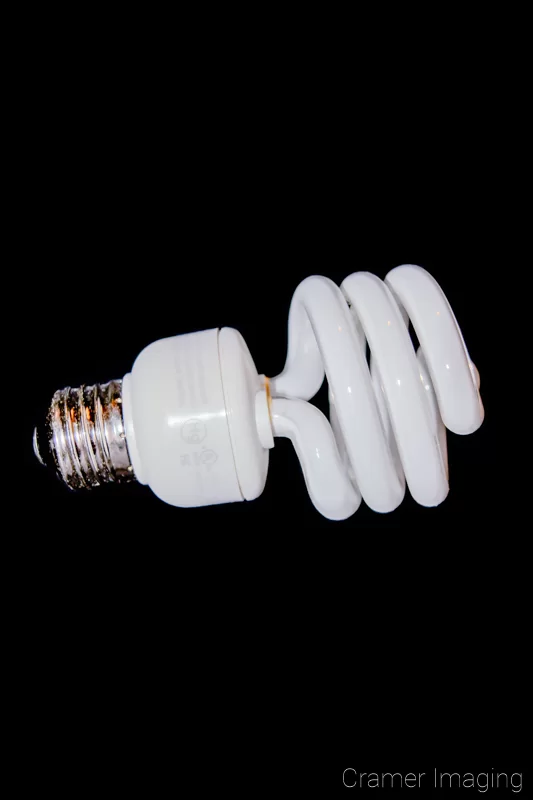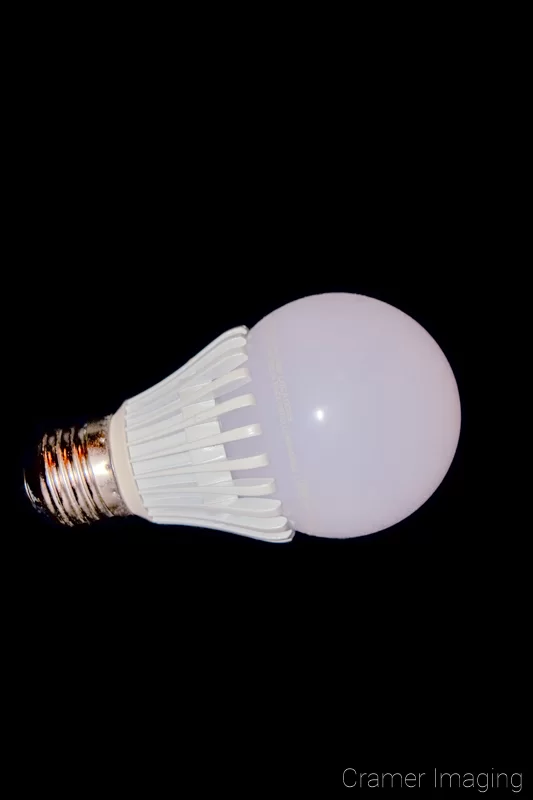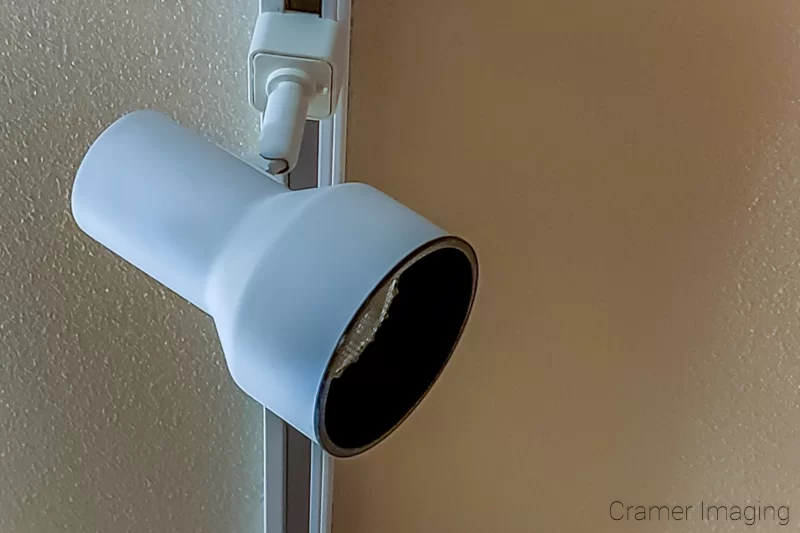Are you a serious art fanatic looking for the best possible way to display your favorite pieces of wall art? I’ve got an angle which you may not have considered. Have you thought about what kind of light you’re showing your artwork under? It makes a difference. So, today we’re talking about the importance of color rendering index (CRI) vs. color temperature in your chosen light bulbs. Hang on. This might get interesting.
To start things off, we’ll discuss what color temperature and color rendering index are just so we establish that foundation. Without it, this discussion makes very little sense.
What is Color Temperature?
Let’s start things off with color temperature. Color temperature refers to the color of the light emitted by the light bulb. Let’s start this off with a brief explanation of the physics for laymen.

The Physics

This consistent change of colors by temperature happens no matter what the material is. This is how metal workers are so easily able to judge the temperature of a glowing piece of metal simply by looking at it. Ever heard of the phrase “red hot” or “white hot?” That’s color temperature in action for you.
Paradoxically, the higher the number and thus hotter the tungsten would be, the cooler we call the color. This is because the lower temperatures tend toward reds and yellows which we naturally associate with warmth. As the temperature increases, it moves toward white and eventually blue which we more associate with cold.
Real Life Applications
Now that we understand a couple basics about color temperature, let’s look at some real life examples which will affect art.
Firstly, what’s the color temperature of the sun? Lots of artwork receives direct or indirect sunlight. Well, in space, its about 5900K. On Earth, the temperature varies a lot depending on how much atmosphere and other materials (pollution, clouds, smoke, etc.) which the light passes through. The color temperature of the sun becomes a range on Earth.

Ok, so that’s the sun. How about other man-made light sources? For this question, Wikipedia has a helpful color-coded chart for various light sources and their color temperatures.
| Temperature | Source |
|---|---|
| 1700 K | Match flame, low pressure sodium lamps (LPS/SOX) |
| 1850 K | Candle flame, sunset/sunrise |
| 2400 K | Standard incandescent lamps |
| 2550 K | Soft white incandescent lamps |
| 2700 K | “Soft white” compact fluorescent and LED lamps |
| 3000 K | Warm white compact fluorescent and LED lamps |
| 3200 K | Studio lamps, photofloods, etc. |
| 3350 K | Studio “CP” light |
| 5000 K | Horizon daylight, Tubular fluorescent lamps or cool white/daylight compact fluorescent lamps (CFL) |
| 5500–6000 K | Vertical daylight, electronic flash |
| 6200 K | Xenon short-arc lamp [10] |
| 6500 K | Daylight, overcast |
| 6500–9500 K | LCD or CRT screen |
| 15,000–27,000 K | Clear blue poleward sky |
These temperatures are merely characteristic; there may be considerable variation
So, as you can see, the cooler the temperature, the more yellow/orange/red the light appears and vice versa.
Color temperature will affect how you view your art. If the color appears too warm or too cool, then the opposite color spectrum will appear a bit muted. Observe these examples.
The Takeaway


Observe how the blue in the sky simply fades. Buy Prints


Now observe how the sun’s yellows and oranges fade. Buy Prints
It’s best to pursue the closest you can find to white light as possible for a balanced color palette in your art. When it comes to color temperature, most art aficionados recommend that you light your art with about a 5000K light. It strikes the best balance between the warmer and cooler colors of light.
Ok, now on to the next topic: color rendering index.
What is Color Rendering Index (CRI)?
Color rendering index refers to how accurately colors appear. We compare the effect under a given light source as opposed to incandescent light. Again, here’s a small layman’s physics explanation.
The Physics

A perfect full spectrum color representation would be a CRI of 100 (no units). This means that a CRI value within a few points of 100 would be excellent, if slightly incomplete, color representation. If you were to look at direct sunlight or an incandescent light through a prism you get a full rainbow just like you would from the sun. This means that both the sun and an incandescent light bulb have a CRI of 100.
Modern high efficiency lighting, on the other hand, doesn’t produce a full spectrum of light. This means that, if you were to examine the rainbow it produces, you would get a bunch of lines of various colors. You would also find holes in the color spectrum. Since you aren’t getting the full spectrum, some subject (art) colors will seem off. The degree of “offness” will depend upon the color and the spectrum of light reflecting it back to your eyes.

This is where CRI comes in. It helps determine how closely the color you see under a given lighting source will appear when compared to the same subject lit by incandescent light. The higher the CRI number, the more color-correct things will look to your eyes.
Real Life Applications
So, we’ve already mentioned that sunlight and incandescent light bulbs give off a full spectrum of light with a CRI of 100, no matter the color temperature. This is basically the industry standard. Alternatively, most CFL bulbs have a CRI of about 80 which is not particularly good. This explains why photography taken under fluorescent lighting requires white balance color correction either in the camera or later in post-processing.



So, now let’s look at some other lighting options. Wikipedia, again, has a very convenient chart for this purpose.
| Light source | CCT (K) | CRI Ra |
|---|---|---|
| Low-pressure sodium (LPS/SOX) | 1800 | −44 |
| Clear mercury-vapor | 6410 | 17 |
| High-pressure sodium (HPS/SON) | 2100 | 24 |
| Coated mercury-vapor | 3600 | 49 |
| Halophosphate warm-white fluorescent | 2940 | 51 |
| Halophosphate cool-white fluorescent | 4230 | 64 |
| Tri-phosphor warm-white fluorescent | 2940 | 73 |
| Halophosphate cool-daylight fluorescent | 6430 | 76 |
| “White” SON | 2700 | 82 |
| Standard LED Lamp | 2700–5000 | 83 |
| Quartz metal halide | 4200 | 85 |
| Tri-phosphor cool-white fluorescent | 4080 | 89 |
| High-CRI LED lamp (blue LED) | 2700–5000 | 95 |
| Ceramic discharge metal-halide lamp | 5400 | 96 |
| Ultra-high-CRI LED lamp (violet LED) | 2700–5000 | 99 |
| Incandescent/halogen bulb | 3200 | 100 |
Common household LED bulbs might have a CRI anywhere from about 70 to about 98. The problem is they seldom list the CRI on the package.
The Takeaway
So, a sizable to serious lack of full color spectrum will affect how you view your artwork under a given lighting condition. Therefore, when choosing bulbs to light artwork, you should select lighting with a good CRI. Generally speaking, a CRI below 85 is considered sub par. So, shop specifically for higher CRI values when choosing lights for art.

Currently, the industry favors LED light bulbs for their longevity and low power draw. Remember the problem with LED bulbs and CRI reporting? Unless you’re purchasing LED lighting specifically for artwork, it can be very difficult to figure out which bulbs to use. However, if you can find LEDs with a high CRI (≈ 90+), they should work well for lighting your artwork. One might venture to say that such bulbs will provide a superior experience in viewing your chosen art.
Color Rendering Index vs. Color Temperature

If you have the budget and shop carefully, you can locate a light bulb source which will illuminate your art to its best potential right in front of your eyes. Choose well. Read the reviews and don’t immediately believe all the hype. Careful research should net you a good product.
Sadly, however, I don’t currently have any to recommend for those interested in recommendations. When I do, I might return and update to reflect my recommendation.

Conclusion
Color rendering index and color temperature both affect the viewing quality of art under given lighting conditions. However, they are not mutually exclusive. You can control both the color and the spectrum of the light given at the same time. So, in conclusion, if you love your art that much, seek out light bulbs with an approximate color temperature of 5000K and a CRI of 90+ for the best viewing experience you can get.
So, what are your thoughts on this subject? Do you recommend a particular light bulb for this purpose? Please share your thoughts and experiences below in the comments so we can all learn together.



